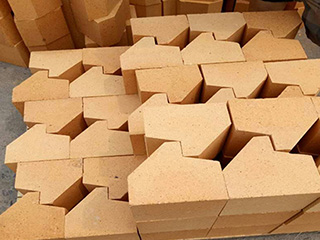Refractory materials are critical components in high-temperature processes, such as furnaces, kilns, and reactors. These materials must withstand extreme temperatures and harsh chemical environments while maintaining their structural integrity. This guide will cover everything you need to know about refractory materials, including their types, properties, applications, and selection criteria.
What are Refractory Materials?
Refractory materials are non-metallic materials that have high melting points and excellent thermal stability. They are used to line high-temperature process equipment, such as furnaces, kilns, and reactors, to protect the underlying structures from the extreme heat and harsh chemical environments. Refractory materials must have high thermal conductivity, high mechanical strength, and excellent resistance to thermal shock and chemical corrosion.
Types of Refractory Materials
Refractory materials can be classified based on their composition, structure, and application. The common types of refractory materials are:
1.Fireclay refractories: These are made of clay and other minerals, such as kaolin, and are used in low-temperature applications, such as fireplaces and chimneys.
2.Silica refractories: These are made of high-purity silica and are used in high-temperature applications, such as glass melting furnaces.
3.Magnesia refractories: These are made of magnesia and are used in applications that require high resistance to basic slags, such as steelmaking.
4.Alumina refractories: These are made of high-purity alumina and are used in applications that require high mechanical strength, such as cement kilns and power boilers.
5.Carbon refractories: These are made of carbon and graphite and are used in applications that require high resistance to chemical corrosion, such as in the chemical industry.
Properties of Refractory Materials
The properties of refractory materials depend on their composition, structure, and processing. The important properties of refractory materials are:
1.Thermal conductivity: This is the ability of the material to conduct heat. Refractory materials must have low thermal conductivity to minimize heat loss.
2.Mechanical strength: This is the ability of the material to resist deformation under load. Refractory materials must have high mechanical strength to withstand the weight of the process equipment and the thermal stresses.
3.Thermal shock resistance: This is the ability of the material to withstand rapid temperature changes without cracking or spalling. Refractory materials must have high thermal shock resistance to avoid catastrophic failure.
4.Chemical stability: This is the ability of the material to resist chemical reactions with the process fluids and gases. Refractory materials must have high chemical stability to avoid degradation and erosion.

Applications of Refractory Materials
Refractory materials are used in a wide range of high-temperature applications, including:
1.Furnaces: Refractory materials are used to line the walls, floors, and roofs of furnaces used in the steel, aluminum, glass, and cement industries.
2.Kilns: Refractory materials are used to line the walls and roofs of kilns used in the ceramic, lime, and cement industries.
3.Reactors: Refractory materials are used to line the walls and floors of reactors used in the chemical, petrochemical, and fertilizer industries.
4.Incinerators: Refractory materials are used to line the walls, floors, and roofs of incinerators used in the waste management industry.
Selection Criteria for Refractory Materials
The selection of refractory materials depends on the specific application requirements, such as the operating temperature, chemical environment, mechanical stress, and thermal shock. The important factors to consider when selecting refractory materials are:
1.Operating temperature: The refractory material must be able to withstand the operating temperature without degradation or melting.
2.Chemical environment: The refractory material must be able to resist the chemical reactions with the process fluids and gases, such as acids, alkalis, and slags.
3.Mechanical stress: The refractory material must have sufficient mechanical strength to withstand the weight of the process equipment and the thermal stresses, such as expansion and contraction.
4.Thermal shock: The refractory material must have high thermal shock resistance to withstand rapid temperature changes without cracking or spalling.
5.Cost: The cost of the refractory material and its installation must be balanced against the benefits of its performance and durability.
Conclusion
Refractory materials are essential components in high-temperature process equipment and play a critical role in maintaining the efficiency, safety, and durability of these systems. The selection of refractory materials must be based on the specific application requirements, such as the operating temperature, chemical environment, mechanical stress, and thermal shock. By understanding the types, properties, applications, and selection criteria of refractory materials, engineers and operators can choose the right material for their high-temperature process equipment and ensure optimal performance and longevity.
Contact: Mgr. Han
Phone: 0086-13589497465
Email: 1255953279@qq.com
Add: Industrial Area of Lingzi Town,Zichuan District,Zibo City, Shandong,China